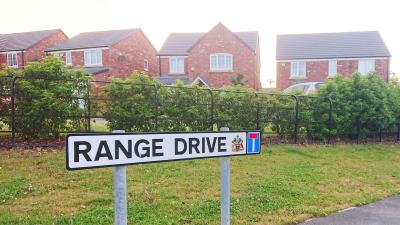Does my new outbuilding need building regulations approval?
With an increase in people working from home, it seems a useful time to revisit the topic of building regulations and small detached buildings, especially those that are to be constructed in domestic settings as home offices, workshops and other uses.
As a rule, the construction of any new building is likely to be work that is controlled under the building regulations. However, there might be cases where some small, detached buildings can be treated as exempt from needing to comply with the requirements of the building regulations. Previous LABC articles have touched on exempt buildings, such as garden buildings, but here we’ll discuss small detached buildings in a little more depth.
Under the building regulations the erection of a building is treated as controlled building work – to which the building regulations must be applied and for which a notice must be given to the local authority before the work begins.
However, building regulation 9 allows some exceptions. These exceptions – or exemptions – can be found in Schedule 2 of the regulations.
The circumstances that permit three types of small, detached buildings to be exempt from the building regulations can be found in Class 6 of the Schedule (one of these is an air-raid shelter!).
This article focuses only on the following Classes of exempt small, detached buildings:
- Those with a floor area not exceeding 30m2; and
- Those with a floor area not exceeding 15m2
To be exempt from the regulations they must have the features listed below and they must not contain any sleeping accommodation (no beds in sheds).
Small detached buildings less than or equal to 30m2
These must be single storey – a roof mezzanine or loft floor would not be permitted, and:
- The internal floor area must not be greater than 30m2 (for example 3m x 10m, or 5m x 6m), and
- The building must be constructed substantially of non-combustible material unless it is 1m or more away from any boundary.
These types of buildings are typically used as garages, workshops, home offices, garden rooms, saunas, solariums, indoor pools.
The boundary measurement rule is important as features such as fascias, soffits, guttering, rainwater pipes - anything that is part of and protrudes from the building - can be counted as being a point from which the closeness to the boundary can be measured. If any part of the building is between 0m to 0.999m then the materials that can be used for construction must be controlled.
In the case of a building closer than 1m to the boundary – to retain the exemption status – materials must be, in the main, non-combustible. That means they should be, for example, walls of brick, block, concrete panel, steel frame with metal cladding etc, and roofs of slate, clay or concrete tiles, or metal cladding.
If the building is 1m or more away from the boundary there are no restrictions on the type of materials that can be used.
Small detached buildings less than or equal to 15m2
These are not limited to being single storey.
- The internal floor area must not be more than 15m2 (for example 3m x 5m, or 2-storeys of 7.5m2 each).
- There are no restrictions in relation to the closeness to the boundary, or the type of materials that must be used.
These smaller buildings can be constructed anywhere within the boundaries of the site (in the garden of a house, for example) and can be constructed from any material – for example it can be a wooden shed, gazebo, sauna, log-cabin, or fabric tent, or plastic playhouse etc.
It's important to know that the 'floor area' of the building means the aggregate area of every floor in the building, calculated by reference to the finished internal faces of the walls enclosing the area, or if at any point where there is no wall, by reference to the outermost edge of the floor. For example, in the case of a garage, if part of one wall is made up of a garage door, the measurement would be to the outside edge of the floor slab.
If the physical features or use do not fit with the rules for exempt status, this does not mean that the building can't be built, it just means that the work is controlled and must be notified to the council under the building regulations, and that an application for building control approval with full plans or a Building notice application must be made, and the work must be inspected. (Visit the LABC Front Door website for information on how to apply for building regulations approval.)
If you are unsure if your proposed small detached building would be considered to be exempt or not you can discuss this with your local authority building control team before you make an application - you can find their direct contact details using the LABC postcode search above.
If the detached building can be treated as exempt then other features can be classed as being exempt too – such as the provision of any toilets, showers, boilers or wood-burning stoves etc. inside the building, so long as these features do not materially change the status of the exemption.
To clarify how this work is controlled:
- The installation of any electrics where the electricity is from a source shared with or located inside a dwelling, in which case the installation must comply with Part P of the regulations and is notifiable work through a competent persons scheme.
- The installation of cold or hot water supplies from a source shared with or located inside any building other than a building or extension of a kind also described in Schedule 2, in which case the work must comply with Parts G1 – Cold water supplies and G3(2) & (3) Hot water storage systems of the building regulations - and is notifiable work.
- The extension of any existing drainage system to serve the exempt detached building, in which case the extended drainage must comply with Parts H1 – Foul drains; H2 – Wastewater treatment and cesspools; H3 – Rainwater drainage, where applicable however the drainage is part of the exemption and so doesn't have to be notified to the local authority.
- Whether a building can be treated as fully exempt from the building regulations or not, there are other matters that must also be considered and/or addressed before any work begins.
- Will the building require planning permission? (External link to the LABC Front Door website for further information.)
- Will a build over agreement (BOA) be required from the sewer authority – in the case of the building being constructed on or close to a public sewer?
- Will permission be required from the gas, electricity, or water authorities for building over or close to any pipes or cables?
Ignoring the above, regardless of building regulations, could result in a fine and/or the building being removed. Similarly, exemption from building regulations does not mean that the building should be unsafe and advice from a qualified and competent construction professional should always be obtained before embarking on such a project, to ensure the building is both safe and compliant. (Read the Front Door advice on choosing and working with a builder.)
Finally, where an existing exempt building is added to, by an extension, and the floor area increases to a point that the building is no longer exempt, this would be treated as a material change of use and the building regulations would apply to both the extended part and the existing building, and the work would be controlled and notifiable.
Disclaimer:
Every care has been taken to ensure that the above content is correct at the time of publication. Any reliance on the content should be verified by the dutyholder(s) and their professional advisers. It is the responsibility of the dutyholder(s) and/or person carrying out the work to ensure compliance with the relevant building regulations and associated legislation.
This content is given in good faith by LABC. It is not definitive and compliance will be a matter for the relevant building control authority to decide as the enforcing body for the building regulations, and ultimately for the appropriate tribunal or court to determine.
This article was updated on 15 May 2025.
Sign up to the building bulletin newsletter
Over 48,000 construction professionals have already signed up for the LABC Building Bulletin.
Join them and receive useful tips, practical technical information and industry news by email once every 6 weeks.
Subscribe to the Building Bulletin





Comments
LABC Response
Submitted 3 years 1 month ago
Kind regards,
LABC
Building on Property boundary
Submitted 3 years 1 month ago
LABC response
Submitted 3 years 1 month ago
Thank you for your comment. The building regulations consider the technical aspects to ensure buildings are built to the correct technical standards. They do not control the height or position of the building. That would be a matter for your local planning authority and therefore you should contact your LA where you live to answer your queries.
Best,
LABC team
Small outbuilding foundations
Submitted 3 years ago
Our local Building Control officer has also made the following comment in a reply to an email I sent him - "The foundations for a controlled extension would need to be between 750mm and 1000mm deep on to virgin sub-soil and below the invert of any drainage runs"
Could you clarify the reason for this as I can't find anything about this in the Building Regs guidance?
LABC response
Submitted 3 years ago
Thank you for your recent question regarding foundation depths. We strongly recommend that you discuss this matter with your Building Inspector. We would also draw your attention to the guidance contained in Approved Document A (2004 edition with 2010 and 2013 amendments https://assets.publishing.service.gov.uk/government/uploads/system/uploads/attachment_data/file/429060/BR_PDF_AD_A_2013.pdf), which supports compliance with requirement A2 of Schedule 1 of the building regulations 2010. Section 2E of the guidance, in relation to – minimum depth of strip foundations – is particularly relevant. You might also want to look at the advice about soil type (https://labcfrontdoor.co.uk/projects/extensions/how-will-my-soil-type-affect-my-home-renovation-project) given on our Front Door website.
Best,
LABC team
Outhouse in Back Garden
Submitted 2 years 11 months ago
Reading your article reaffirms my understanding that its an exempt/permitted development building work hence I dont have to notify local council and can start my work. Is that a correct understanding? There is an urgent need to work from home full time hence looking to get work done ASAP.
Also all along I was told by builder and architect that its the external dimensions for 30sqm however your article says its internal. while I am not worried about floor area but more keen to see if roof height of 2.5m could be internal measurement. what would be the suggestion please?
you had mentioned that drainage isnt a notifiable work but would WC and shower plumbing needs to be notified for this outhouse?
also any suggestion on what should be the depth for the foundation? My builder recommends 0.6m and would help to know your opinion too.
Apologies for a rather long message but I am sure will help others too with such common questions while considering outhouse project.
LABC response
Submitted 2 years 11 months ago
Thank you for your recent enquiry regarding your proposal to construct a garden workspace, the following response is my opinion on behalf of LABC..
LABC is a membership organisation, providing advice and support to its member local authorities around England and Wales. As a result, LABC cannot comment on the application and enforcement of the Building Regulations to a particular situation as this is a matter for the local council and ultimately the courts.
To maintain an exemption from building regulations when your building is to be positioned with 1m of the site boundary, the building will need to be constructed substantially of non-combustible material. It is not possible to determine this from the information you have provided. The binders used in fibreglass panels can often mean that the material is combustible and there are combustible insulation products, for example.
Exemption from building regulations and permitted development for planning purposes are different systems of legislation with separate conditions. If your building is exempt from the building regulations, you will not need to notify the local authority under this legislation. You should discuss permitted development rights with your local planning authority.
There is no minimum dimension for the roof height for building regulation exemption as the exemption is based upon floor area. There are constraints for permitted development purposes, however. You may find the information on our webpage ‘Will I need planning permission for my outbuildings? (https://labcfrontdoor.co.uk/projects/garden-work/will-i-need-planning-permission-for-my-outbuildings)’ informative.
The WC and shower would not need to be notified to the local authority where it is provided within an exempt building.
The foundation depth will be site dependent and cannot be fully determined until the excavation has been made. Your contractor may have local knowledge so that they can form an initial opinion that 0.6m will typically suffice but this is a matter for them to confirm to you. If you need further opinion, you will need appoint a competent professional to assist you.
Please discuss the details of your proposals with your professional advisors and contact the Building Control team at your Local Authority to discuss project specific requirements. You can find the contact details of the relevant Building Control team by entering your postcode in the search box at the top right-hand side of our website.
Best,
LABC team
Non - Combustible Materials - Clarification Required
Submitted 2 years 11 months ago
LABC response
Submitted 2 years 10 months ago
LABC is a membership organisation, providing advice and support to its member local authorities around England and Wales. LABC cannot comment on the application and enforcement of the Building Regulations to a particular situation as this is a matter for the local council and ultimately the courts. Please contact the Building Control team at the relevant Local Authority to discuss any project specific requirements. You can find the contact details of the relevant Building Control team by entering your postcode in the search box at the top right-hand side of our website.
Best,
LABC team
Additional outbuildings
Submitted 2 years 10 months ago
Thanks
Add new comment